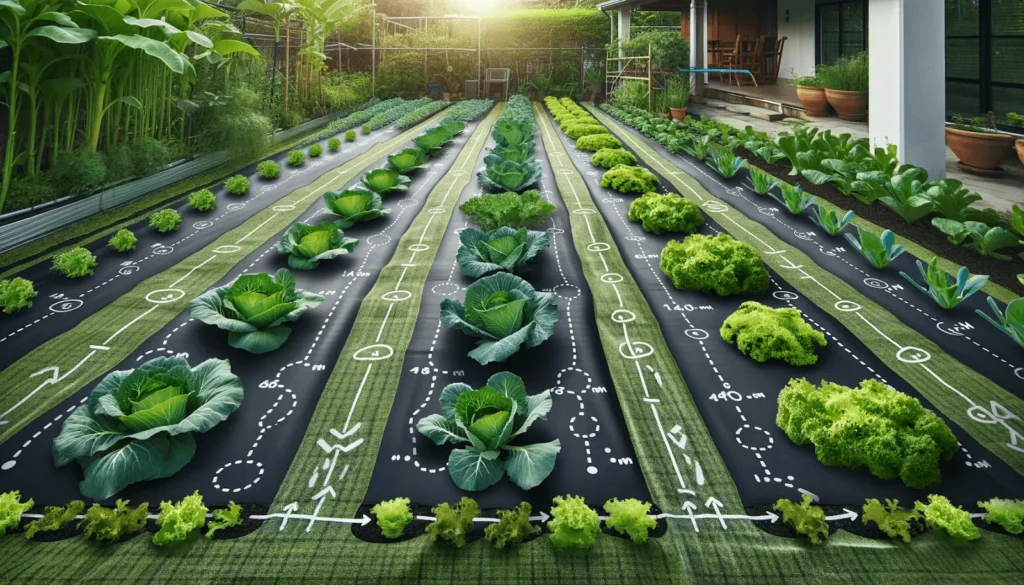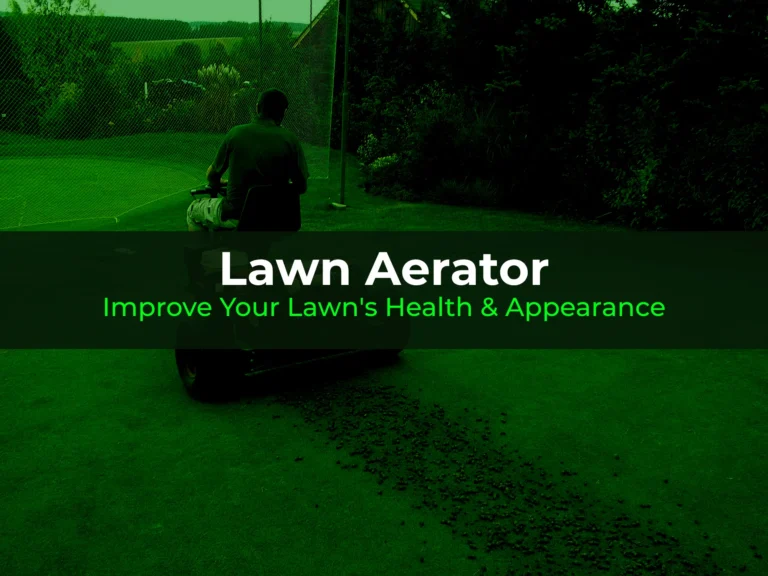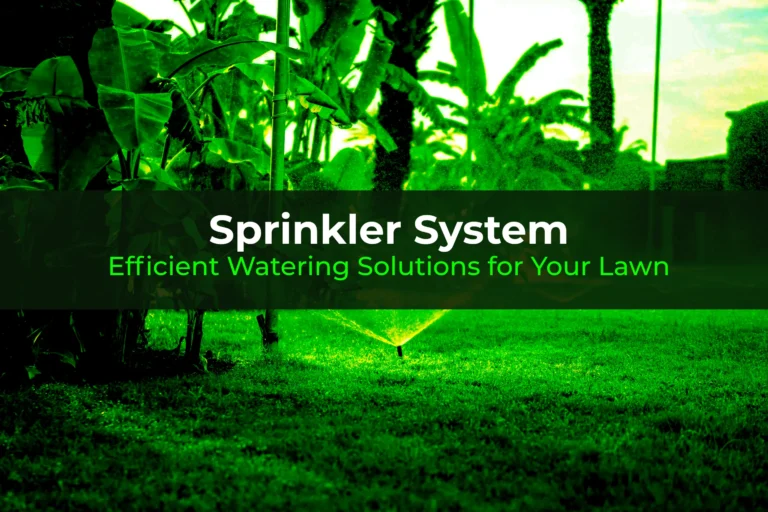
Landscape Fabric: The Ultimate Solution for Weed Control
Discover how landscape fabric can simplify your gardening, offering effective weed control, soil stabilization, and moisture retention for healthier plants and a beautiful garden.
Introduction to Landscape Fabric
In gardening and landscaping, landscape fabrics play an important role in acting as a layer to prevent the growth of weeds and is also significant in preventing soil erosion and retaining moisture. Fabric used is commonly polypropylene or polyester and it is synthetic material that is permeable to water and nutrients through which water and nutrients can pass through to the soil in question and at the same time controlling weed growth.
The following materials are selected for these types of applications because of their longevity factor – they do not decay from UV exposure, are permeable, and can be used for long-term outdoor application.
Despite stating that its primary benefit is related to weed control the writer gives several reasons as follows Weed control: The use of fabric protect crops from weed without the use of chemicals. Landscape fabric mulch works well since it reduces light access to weed seeds hence restraining their growth while allowing the wished for plants to grow without obstruction. This not only helps eliminate the problem of having to deal with weeds manually but also increases an plants general heath due to the lack of stress most plants undergo when experiencing invasion by unwanted species.
Apart from weed control, landscape fabric acts as one of the best tools, which are used in preventing soil erosion. The system helps in tremendous support and management of the soil whereby erosion as a result of flowing waters or even wind is prevented. This is very helpful on areas having a soil that is characterized by low compaction or those that have lots of sand since soil erosion brings about severe land deterioration. Thus, the construction of the fabric guarantees the water penetration into the soil; in other words, it reduces the level of runoff and instability of the root system.
The third advantage of fabric is that the fabric material tends to hold moisture in the soil even when the moisture is not needed. It slows down the process of evaporation thus allowing for more water to be retained in the soil acting as a vially important water reserve for further plant growth. It is perhaps here where choice made to do so are most important especially when one considers the regions of the world characterized by hot dry weather where water is a most valuable resource. Powdered form: By absorbing moisture, fabric not only improves the health of plants but also optimizes the use of water.
In conclusion, it is a cheap and significant material for gardeners and landscapers since it makes work easier through controlling weeds and aiding in the stabilization of the soil besides enhancing the addition of moisture. It should be a key element in designing and sustaining ecosystems to ensure that they are living and sustainable.
Benefits of Using Fabric for Weed Control
Landscape fabric use for weed control provides added benefits to the gardeners as well as the landscape contractors. First, one of the primary advantages of mulch is that it serves a physical barrier, preventing weeds from germinating and growing in the first place. Fabric deprives weed seeds from getting a chance to grow since they do not get to see the light yet lets water and other nutrients it requires to access the soil. This double-purpose makes it possible for your preferred plants to be supplied with all the necessities that they require to grow well and beat away the unwanted invades of undesirable weeds that may otherwise compete with your preferred plants for the available limited resources.
Some of the advantages of using the landscape fabric, Which is important in the long-run, includes preventing weed from growing, thus minimizing the maintenance. With weeds pulled out as competitors, gardeners can spend more time and effort on other aspects of plant care such as pruning, fertilizer applications, and plant ornamental qualities. Further, competition between the weeds and the desirable plants is eliminated since healthy plants have a better chance to access water and nutrient in the soil and thus grow and produce more prolifically.
Fabric is another feature that benefits gardening techniques of environmentally efficient types. In preventing weed germination, use of a material such as the landscape fabric removes the need for chemical herbicides which are known to affect the earth and the human body in a negative way. The reduced use of these chemicals is very encouraging towards sustainability of the garden and is a welcome shift toward more organic and ecological practices a liked by most gardeners.
It also stimulates the health of the garden ecosystem in which it is applied, as well as conserves the general environment since there is little distribution of chemicals to the water and ground.
In conclusion, the utilisation of fabric for weed control is advantageous in several ways where weed control is of essence, and a variety of benefits including the lack of need for weeding and growth of healthier plants is achieved with little to no harm to the environment. Thus, landscape fabric protects garden soil from weeds, while at the same time allowing water and nutrients to penetrate the soil—the tool indeed satisfies the need of gardeners who want to tend to their gardens without the threat of the encroachment of weeds.
How to Properly Install Landscape Fabric
Landscape fabric installment is very easy and it can greatly improve weed suppression in your beds and borders. Here is the proper installation guide for easy and proper implementation:
Tools and Materials Needed
First, there is a set of preparatory tools and materials that will be required during the work – fabric pins/staples, scissors, a rake, a shovel, and mulch or any other sort of ground cover. Fabric and pins of improved quality will enhance the efficiency and endurance of the item.
Site Preparation
Start with land clearing processes to bring about construction readiness. Remove the weeds, rocks and other debris present in the area that will be developed using rake and shovel. It is, therefore, advisable to begin with the surface clean to ensure the best fabric weeds blocking characteristics. Ensure that the soil is leveled so that there are no depressions or bumps on the surface, as these may cause bunching of the fabric or prevent it from sticking as required.
Laying the Fabric
Spread out the fabric on the area that has been prepared in this method. if it is to be used when covering a large area, then it must be cut into parts that could easily fit into each other using a scissor. For proximal regions, one may be adequate If it is still large, this creates the need for another. Ensure that the lap of adjacent pieces is 6-12 inches to help in act as a barrier against weeds growing through the seams. Place it with its rough part facing down in order for it capture or stick to the soil.
Securing the Fabric
Fasten the fabric by using fabric pins or staples, starting with each side and the seem line and at intervals of 8-12 inch for seam lines and edges for keepaway in the look on the subsequent steps. Make sure fabric is smooth and tight on foam but do not pull on the fabric too tight as it could tear easily. Areas where there potential of fabric to lift easily should receive more attention, particularly their corners and edges.
Covering with Mulch
Once the fabric has been well established over the ground, the next step is to spread a layer of mulch or any other ground material on it with a thickness of about 2-3 inches. The mulch is not only eye pleasing but also shields the fabric from sun chiefly through UV deterioration and thus increases the fabric’s durability. In order to prevent weeds from germinating in a particular area, spread the mulch as thin layer in order not to form layers that do not allow weeds to grow from the beneath.
Tips for Longevity
To ensure your fabric remains effective for years, follow these tips: lapses that are interwoven well enough to contain weeds, should not step on the fabric in order to avoid instances where the fabric tears and should check for signs of tearing or other forms of wear after certain intervals. In case of tears seams it momentarily with other opening fabric and fasten with the pins.
So, if you apply the following elaborate guidelines, then, you surely can install a landscape fabric and get your weed-less garden with little efforts.
Maintenance and Longevity of Landscape Fabric
In this respect, fabric care proves to be a vital concept as the long term effectiveness of the fabric in weed control can only be guaranteed under proper maintenance. This means that the rails must be inspected frequently to ascertain if there are any adverse symptoms such as cracks or other signs of wear.
These are supposed to be comprehensive and should cover the whole area for any traces of fabric; rips, penetrations, or areas in which the fabric is exposed. To ensure that weed does not penetrate through the barrier and affect the result it is necessary that any of these issues are addressed immediately.
In case you find some, correct it by ensuring the areas of damage is corrected by patching them up. For this reason, utilize another part of the very same or comparative material and utilize the landscape staples or pins to close it. Apart from that, it makes it easier to breathe new life into old fabrics since it is a method that can help further elongate the lifespan of the fabric.
Another feature that contributes to the durability of such fabric is the preservation of the surrounding space appropriately. Appropriate measures of irrigation ought to be adopted so as not to dampen the membrane since this may lead to some form of fraying with time. Another important practice is mulching; should be done by placing a layer of organic mulch over the fabric to shield it from UV degradation as well as physical degradation, while at the same time promoting water retention and suppression of weed growth.
The quality of a fabric can determine how long it would last, with some fabrics wearing out in a shorter period of time than others. For instance, fabrics with better quality are, most of the times more effective, more resilient to loads and environmental factors. It is also important to understand that properties of the fabric like its ability to handle UV radiation, the thickness of the fabric itself, and the type of weave could also have direct impact on its longevity. Considering these factors and other parameters, fabric can have a use expectancy of between 5 and 25 years on average based on its mode of application.
More important, climate and weather conditions have a significant impact on the durability of landscape fabric. Fabrics that undergo a number of cycles in extreme conditions in terms of temperature, rain or frost are likely to deteriorate in performance faster. It is, hence, important to ensure that you chose a fabric appropriate to the climatic conditions in your region to ensure an extended wearing ability.

Conclusion
By and large, it can therefore be seen that landscape fabric is one of the most useful tools that are available in gardening and landscaping, for the limitation of weeds. If you have been keenly following my outlines, then I can emphatically confirm that the inclusion of the fabric into gardening can help you save a lot of time and energy from weeding while observing healthier and brighter plants. Fabric is not only weed-suppressing material but ultimately contributes to improved water containment in a garden bed and acts as a barrier against soil erosion, which is also beneficial for the entire garden environment.
Hence, those who wish to reduce the degree of maintenance in their gardens will be well advised to incorporate the landscape fabric in their work as they help keep unwanted weeds off your plants so that they can feed as well as get all the other support they require. Landscape fabric is one of the most important tools you need to tackle in your garden as it assists in lifting your gardening experience, reducing on physical strain.
Thus we wish to persuade you to reap the benefits of the fabric in your own gardening procedures. Landscape fabric is applicable to any kind of gardener whether they are a beginner or an experienced landscaper and can result in valuable changes if used correctly to achieve a more effective and thriving garden.
Our readers are welcome to provide their own suggestions about fabrics based on their own experience and any recommendations of using the fabric in a better way. Writing about gardening practices, you may offer helpful tips that will be helpful to other gardeners.
FAQs
What Types of Landscape Fabric Are Available?
There are primarily three types of fabric: woven, non-woven, and spun-bonded. Woven fabrics are durable and best suited for high-traffic areas. Non-woven fabrics are more permeable and ideal for flower beds and gardens. Spun-bonded fabrics combine the benefits of both woven and non-woven types, offering durability along with good water permeability.
Is Landscape Fabric Suitable for All Types of Plants?
Landscape fabric is generally suitable for most types of plants, particularly perennials and shrubs. However, it may not be ideal for annuals or plants that propagate through the soil, as it can inhibit their growth. Always consider the specific needs of your plants before installation.
How Should I Handle Installation Around Existing Plants?
Installing landscape fabric around existing plants requires some care. Begin by cutting the fabric to fit the area around the plants. Make a cross-shaped incision where each plant is located, and gently fit the fabric around the base. Secure the fabric with landscape staples to ensure it stays in place. This method minimizes disturbance to the plants while effectively controlling weeds.
How Do I Dispose of Old or Damaged Landscape Fabric?
Disposing of old or damaged landscape fabric should be done responsibly. Check with your local waste management facility to see if they accept landscape fabric for recycling. If recycling is not an option, place the fabric in a designated waste disposal bag and follow your community’s guidelines for disposal. Proper disposal helps maintain environmental sustainability.
About Lawn Movers Guide
Interesting Posts


Top Trends in Lawn Striping Kits for 2024



Soil Moisture Meter: An Accurate Garden Monitoring Tool

Twenty years from now you will be more disappointed by the things that you didn’t do than by the ones you did do.
- Mark Twain Tweet

Lawn Aerator | Improve Your Lawn’s Health & Appearance


Fertilizer Spreader: Enhance Your Lawn’s Health Today
